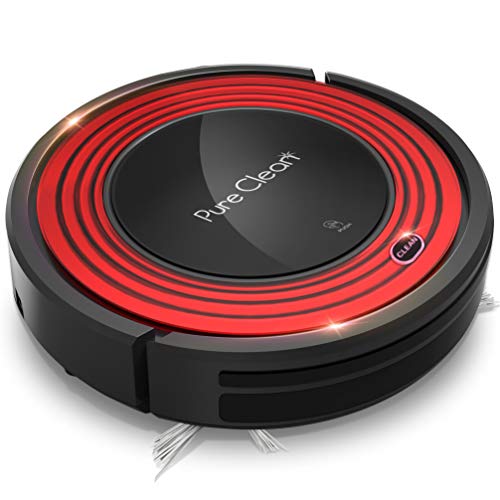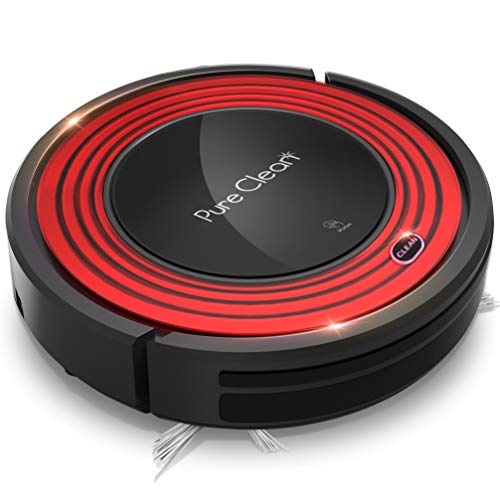Consider this 2-in-1 cleaner if you're looking for one that can do all. It vacuums low-pile and medium-pile floor carpets, and its app lets you create mop-free areas, and change cleaning schedules and modes of operation.
Find models that determine the kind of flooring they're using, remove their own water and dirt tanks and avoid obstacles like socks, chargers for phones and pet hair. Also, discover how easy it is to install.
Self-Emptying
As the world becomes busier and more hectic, people are always seeking ways to reduce their work load. Robot vacuums and mop swabs are among the most effective tools on the market to aid in that. These machines can vacuum pet hair, dirt, and crumbs while also cleaning the floors. You can also use a smartphone or a voice assistant to control them via pre-programmed schedules as well as specific room designations.
One of the most efficient time-savers for both users and machines are self-emptying models, which don't require you to empty the trash bin after each cleaning cycle. This can save you time and allow your robot to clean your entire house more frequently.
If you are considering a model that self-empties make sure you check the size of the bin as it is likely to fill up if it is frequently used. You should also make sure that the system does not overfill, which can cause blockages that will stop the robot from being able to fully empty it.
The self-emptying feature is a way of taking the dustbin out of the machine, and placing it in a bigger storage container. Think of it as a bag that fits on a vacuum cleaner. It is empty after every two or three cycles. The robots are worth the extra cost since they have this premium feature.
To mop Some models wash and dry their own dirty pads after every use. Others have a dock that does the work for you, and you only have empty it once or twice per year.
Check out this Roborock robotic which is highly rated for its ability to perform both tasks. The RockDock-S7 MaxV Ultra can both vacuum and mop, with the dock that can do all the maintenance for you. It's not necessary to empty the tanks manually and you can program the unit to start using the on-device controls and voice assistants such as Alexa and Google Assistant. It even has boundaries to ensure it stays out of certain areas if you don't want it roaming all over your home.
Object Avoidance
The best robot vacuums feature object avoidance, which helps the appliance maneuver between furniture legs and children's toys. This is essential for busy households with kids and pets, since should the robot come into contact with these objects, it could stop or break it.
 The technology is typically based around a single sensor, or a pair of sensors located close to the bumpers that absorb shocks of the vacuum cleaner. Once sensors detect a roadblock, the robot will automatically reorient and turn until it can find an open path. Certain models utilize lidar technology, which uses lasers to determine the distance between the robots and surrounding objects. This allows it to create an outline of its surroundings in real-time, and move more efficiently through your home.
The technology is typically based around a single sensor, or a pair of sensors located close to the bumpers that absorb shocks of the vacuum cleaner. Once sensors detect a roadblock, the robot will automatically reorient and turn until it can find an open path. Certain models utilize lidar technology, which uses lasers to determine the distance between the robots and surrounding objects. This allows it to create an outline of its surroundings in real-time, and move more efficiently through your home.Other robovacs that do not utilize lidar technology, are made to recognize obstacles with cameras using monocular or binocular sight. These systems work well in optimal light conditions, but don't work as well in low-light settings or with objects with similar to their surroundings. For instance, a robot with monocular vision will have trouble recognising shoes or cables.
Some of the most advanced robot vacs do more than just avoid obstacles, which is why they're also called smart vacuums. They can create a virtual map of your home and you can send them to specific rooms or areas via an app. They can even remember the places they've cleaned. This will cut down on cleaning time and ensure that your home is properly cleaned.
The most advanced robotic vacuums cheap and best robot vacuum cleaner and mop mops can change between floor types. Certain models automatically recognize what type of flooring is in a room and adjust their suction and brush functions to match. Others can even move from carpet to hard floors without losing suction power.
Regardless of the flooring type, all smart vacuums and mops should be equipped with some form of obstacle avoidance. These devices prevent the vacuums from getting caught in webs or wires that could cause them to lose suction. Certain models come with a list containing common items that they know to look out for, like socks, shoes and pet waste. The most effective models can recognize these objects as well as calculate their size and distance, and evade them without running into them.
Floor Mapping
The majority of robot vacuums have sensors that aid in detecting objects. If an object -- like furniture legs or a randomly tossed toy -- gets in the way it triggers a sensor that tells the vacuum to steer away from the obstacle and toward a cleaner part of the floor. However they aren't completely reliable. For example the Roomba 900 Series was able to stay clear of our shoelaces and wired headphones, but it inadvertently sucked up a USB cord. We advise removing any objects from the robot's path before running it through your home's rooms.
A lot of the vacuums and mopping robots that we have tested in The Spruce include an app. It can be used to save maps, create schedules, select cleaning modes and track the performance of your robot. The best apps offer features that will help your robot be more efficient. They are intuitive and easy to use.
 App integration allows you to keep track of the water tank and dirty pads on your robot. You should look for models that allow you to check the level of water in the tank and the amount of moisture on the pad and when the pad needs to be changed. You can also program a schedule to automatically swaps out the pad when it's wet to avoid mildewy smells from getting into the old one.
App integration allows you to keep track of the water tank and dirty pads on your robot. You should look for models that allow you to check the level of water in the tank and the amount of moisture on the pad and when the pad needs to be changed. You can also program a schedule to automatically swaps out the pad when it's wet to avoid mildewy smells from getting into the old one.Mapping is a crucial feature for robot vacuums working across multiple floors of a house. It lets the robots create an outline of your home that they can use to navigate and clean different areas. Certain robots make use of sensors and artificial intelligence to create these maps. For example, iRobot’s Vacuuming Mapping makes use of multiple sensors to scan an area including walls and corners to determine how far the robot can travel before hitting furniture or bumping into obstacles.
Other robots, such as the Ecovacs Deebot X1 -OMNI or the Roborock S7 MaxV Ultra use optical sensors to determine the location of walls. They can then apply a mapping algorithm or follow the edges of furniture to figure out the most efficient route for each room.
Mopping Sets
Robot vacuums operate on autopilot, with you doing nothing more than hitting the button on a remote or an app to clean a room. You can also make use of voice commands to create schedules which is a useful feature for busy families who would like their robot to complete its tasks at the same time every day.
The majority of robot mops utilize microfibre pads, which are soaked using water tanks in their base, and many are able to be used repeatedly before having to clean or replace the pad. You should look for models that alter the amount of water dispersed to accommodate different flooring types. Also, think about the size of your tank, its ability to switch between dry mopping and dry mopping, and the amount of time a mop from a robotic machine will last on one charge.
The best robot mops are able to clean floors quickly and efficiently even under tables and around obstacles. While they're not perfect, they can struggle to climb stairs or navigating ledges between rooms. They can leave streaks on timber or tiles particularly in the sun.
A high-quality robot vacuum and mop should also come with sensors that detect and avoid carpet. This is an important feature to have if you have a variety of flooring types in your home, since it ensures that the cleaner won't be caught by or be dragged across the rug. It should be able to identify other objects that could hinder the cleaning process, such as cords and tassels. This will allow you to designate "no-go zones" that prevent the robot accessing these areas.
The majority of robot cleaners that we test in our CHOICE lab are equipped with a smart app integration. This allows you to save maps of your house and set up cleaning schedules, and choose cleaning modes. You'll also be able to set up virtual barriers to prevent your robot from certain areas, and receive (sometimes amusing) warnings about errors when the device encounters issues. Certain apps are more user-friendly than others, and some provide a live webcam for monitoring of your robot.












